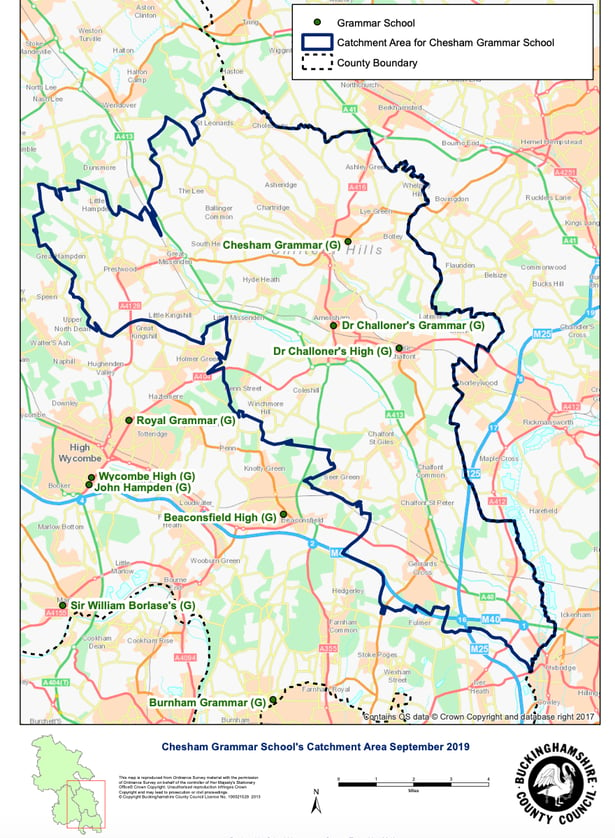School Spotlight: Chesham Grammar School
4/4/20252 min read
Chesham Grammar School (CGS), a co-educational academy in Buckinghamshire, consistently ranks among the county’s top-performing selective schools. With its Outstanding Ofsted rating (2014) and strong academic track record, it attracts families seeking rigorous education. Here’s a detailed overview for parents considering CGS for their child’s 11+ journey.
Admissions Process and 11+ Requirements
CGS participates in Buckinghamshire’s Secondary Transfer Test (STT), administered by GL Assessment. Key details:
Exam date: September 2025
Pass mark: 121 (out of 141)
Places available: 180 in Year 7
Oversubscription criteria: Prioritizes catchment area residents, siblings, and children of staff.
Prospective students typically prepare via tutoring or practice papers. While some parents report success with minimal preparation, the competitive nature (80% pass rate at top tuition centers) means many opt for structured support. The school advises aiming for 75%+ in practice tests.
Academic Performance and Ethos
CGS boasts exceptional results:
GCSE 2023: 75% grades 9–7, 98% 9–5 pass rate.
Progress score: 0.88 (well above national average).
The curriculum emphasizes humanities, with students encouraged to take 10+ GCSEs. Sixth formers often pursue Russell Group universities, supported by a culture that blends high expectations with a “work hard, play hard” ethos. However, parents note relentless academic pressure, particularly for borderline 11+ scorers, with reports of stress and minimal tolerance for grades below 7.
Pastoral Care and Student Wellbeing
While the school’s official policy highlights a “robust pastoral system” involving form tutors, house leaders, and counsellors, parent reviews reveal contradictions:
Positive: Structured support for SEN students.
Criticisms: Complaints of inadequate mental health support and dismissive responses to bullying incidents.
Extracurricular and Social Opportunities
CGS offers diverse activities to balance academics:
Clubs: Drama, music ensembles (choir, orchestra), and sports teams.
Facilities: Expanded sixth-form centre (Curtis Centre), dedicated arts blocks, and a focus on character-building trips.
However, some parents criticize the limited social events compared to local comprehensives, noting a transactional focus on grades over holistic development.
Catchment Area and Demographics
The catchment spans Chiltern District (Amersham, Great Missenden) and parts of Hertfordshire. With Chesham’s Metropolitan Line access, some students commute from North London. Demographics skew middle-class, though 27% of pupils qualify for free school meals.
Parent Reviews: Key Considerations
Strengths: Strong teaching quality, resources, and university readiness.
Weaknesses: High stress levels, outdated facilities in some areas, and variable pastoral responsiveness.
One parent summarized: “Grades are decent because able students teach themselves” highlighting concerns about overreliance on student initiative.
Alternatives and Comparisons
Dr Challoner’s Grammar School: Higher A-level results (53.8% A*/A vs. CGS’s 36.4%) but single-sex and more traditional.
Amersham School: State comprehensive with improved results and better pastoral support, albeit less academically rigorous.
Berko School: Private option criticized for attracting 11+ “rejects” and lacking academic drive.
Open Days and Next Steps
Open event: September 2025.
Application deadline: Aligns with Buckinghamshire’s coordinated admissions scheme (typically October).
Conclusion
Chesham Grammar School delivers academic excellence but demands resilience from students. While ideal for self-motivated learners, parents of borderline 11+ scorers should weigh the pressure-cooker environment against alternatives like Amersham School. For those prioritizing grades and university pathways, CGS remains a compelling choice—provided families proactively address wellbeing needs outside the classroom.


contact@phoenixacademy.com
+44 7388 882200
© 2025. All rights reserved.
